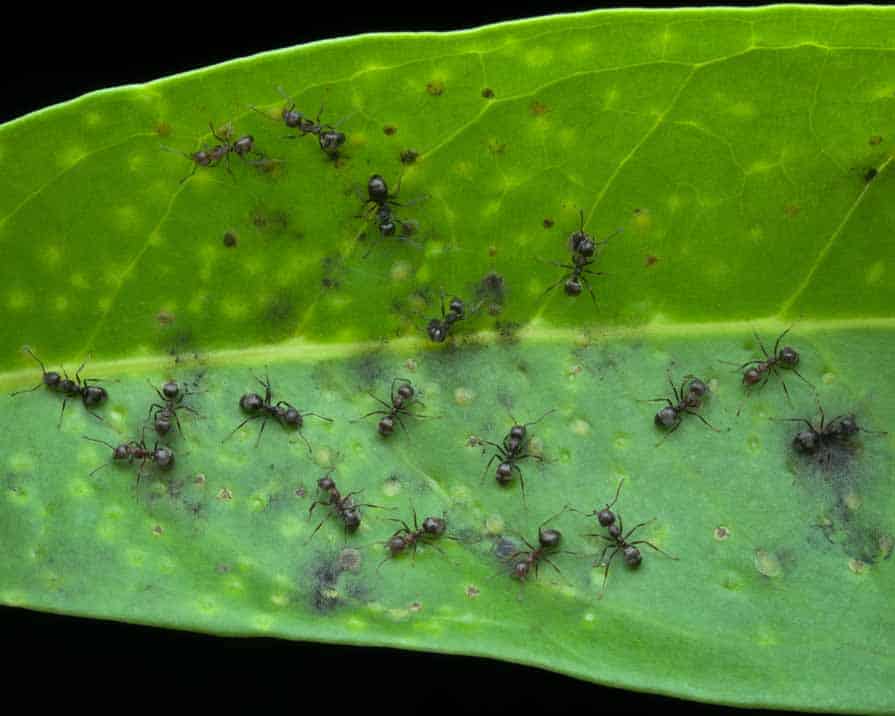When we arrive at a Raleigh home to inspect an ant problem, one of the first questions we might ask is, “Have you noticed any winged ants, or have you seen different sizes of ants around?” That’s because understanding the ant life cycle can offer vital clues about how established a colony is and how we should approach control.
The Big Picture
Ants are social insects living in highly organized colonies that can contain thousands—or even millions—of individuals. Each ant has a job to do, and their teamwork ensures the survival and growth of the colony.
Stages of the Ant Life Cycle
- Egg: The queen lays tiny, pearl-like eggs. Depending on the species and environment, these eggs can hatch in a matter of days or weeks.
- Larva: After hatching, the larva looks like a small, legless grub. The workers feed and groom the larvae constantly, supplying them with proteins and other nutrients.
- Pupa: Once the larva is ready, it pupates. In many species, the pupa is enclosed in a silken cocoon. This stage can last several weeks, during which major body transformations occur.
- Adult: Upon emerging, each ant has a defined role: worker, queen, or male (drone). Workers are sterile females who forage for food, care for the young, and defend the nest. Males exist mainly to mate with a virgin queen and typically die shortly after.
The Queen’s Role
The queen is the backbone of the colony, producing eggs to keep the population thriving. Some species can have multiple queens in one colony, making them even harder to control. If you don’t eliminate or isolate the queens, the colony can recover quickly—even if you kill off hundreds of workers.
Worker Ants: The Colony’s Engine
Worker ants are the most visible to us because they’re the ones you see in your kitchen or along your baseboards. Their main tasks include:
- Foraging for food sources and bringing nutrients back to the nest.
- Caring for Larvae by feeding them and keeping them clean.
- Expanding and Maintaining the nest structure.
Swarmers and New Colonies
During certain times of the year—often spring in Raleigh—you might see winged ants flying around, especially after rain. These are reproductive males and potential new queens, often called swarmers. They mate during flight, and the fertilized female will shed her wings and seek a new nest site. This process is how new colonies spring up around your property or even in neighboring lots.
Why Understanding the Life Cycle Matters for Control
- Targeting the Queen: Any control method that doesn’t address the queen (or queens) may offer only temporary relief.
- Worker Behavior: Baiting systems rely on workers carrying poison back to the nest, feeding the larvae and queen. Understanding the feeding habits and preferences of workers can greatly increase the success of baits.
- Seasonal Changes: Knowing when swarmers appear can help you anticipate new colonies. Scheduling routine inspections during these times can prevent significant infestations down the road.
What Wake Pest Does Differently
At Wake Pest, we tailor our approach based on the colony’s stage and the species involved:
- Thorough Inspection: We look for signs of brood development (eggs, larvae) and whether swarmers are present.
- Bait Selection: We choose baits that match the ants’ dietary preferences—sugary, protein-rich, or fat-based—so workers will share it with the entire colony.
- Long-Term Monitoring: Even after treatment, we keep an eye on whether new queens might establish a satellite colony.
Raleigh’s Unique Challenges
Our mild winters and humid summers mean ant colonies can remain active almost year-round. The abundance of trees and vegetation in and around the city also creates plenty of nesting sites. That’s why many homeowners notice ant activity even in cooler months.
A Quick Stat on Ant Populations
An established ant colony can house anywhere from a few hundred to several hundred thousand ants, depending on the species. And some supercolonies, like those formed by Argentine ants, can stretch for miles—making professional intervention essential when infestations spread.
Tips for Homeowners
- Seal Entry Points: Use caulk around windows, doors, and pipes to limit easy access.
- Keep a Clean Kitchen: Wipe up spills immediately, store food in airtight containers, and take out trash regularly.
- Eliminate Moisture: Repair leaks and clear gutters. Damp areas are attractive to ants.
- Schedule Routine Inspections: Early detection can stop a budding colony before it becomes a major infestation.
Final Thoughts
By understanding the life cycle of an ant colony, you can see why quick fixes might not be enough. Effective ant control takes a strategy that addresses every stage of the colony and, most importantly, targets the queen. If you have more questions or suspect a sizable colony has taken up residence in your Raleigh home, don’t hesitate to call us at Wake Pest. We’re here to guide you through every stage—unlike the ants, we’d love to avoid multiple generations moving in!

